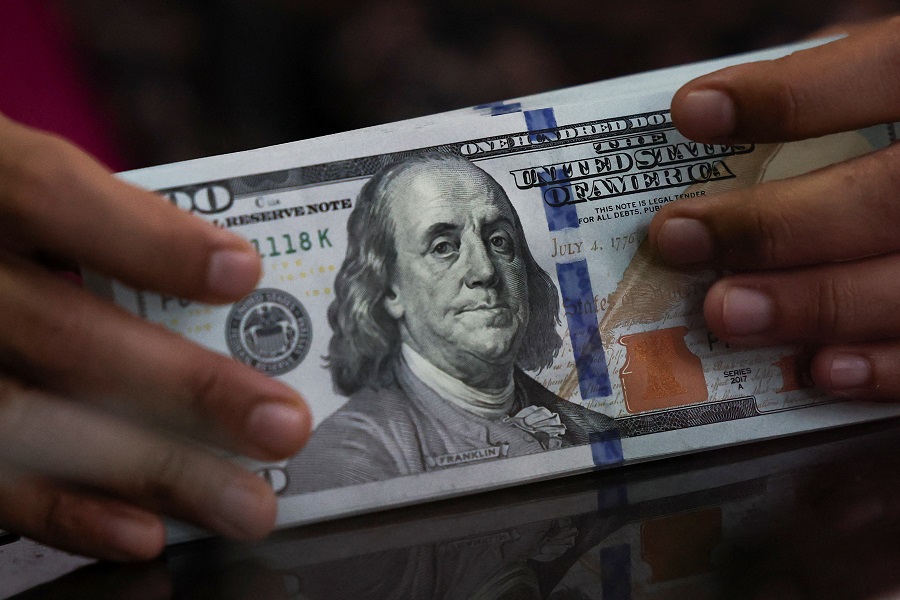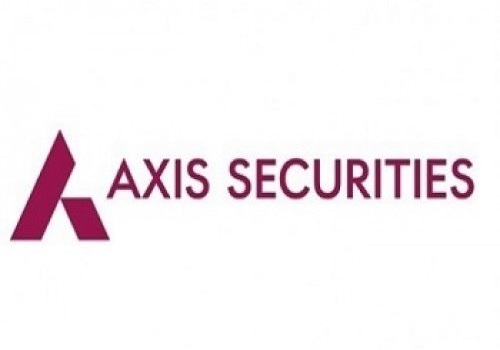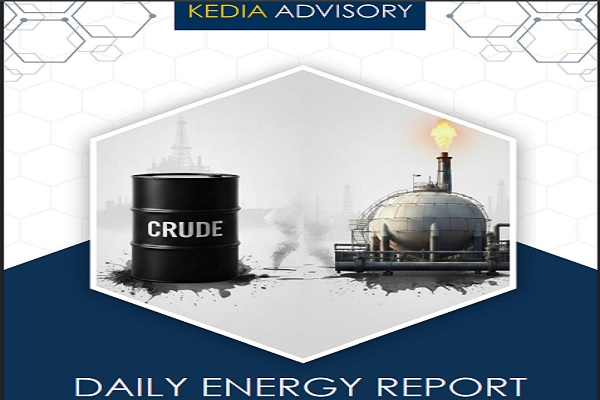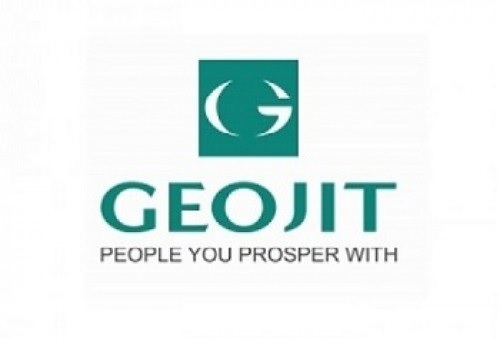Gold trading range for the day is 98155-99605. - Kedia Advisory

Gold
Gold prices slipped by 0.22% to 98,769, pressured by a stronger U.S. dollar and hawkish signals from the Federal Reserve. The Fed kept interest rates unchanged on a 9-2 vote, but Chair Jerome Powell’s firm stance against a September rate cut and his meeting-by-meeting approach dampened investor sentiment. Strong U.S. Q2 GDP data added further weight, with solid headline growth overshadowing weakness in consumer spending and business investment. The Fed’s statement highlighted elevated inflation and low unemployment, while acknowledging ongoing economic uncertainty. On the physical front, global demand dynamics were mixed. Swiss gold exports surged 44% in June to the UK, hitting 83.8 metric tons—an indication of rising investor demand in Western vaults. However, China's gold imports declined for the second consecutive month, down 36.3% in June to the lowest level since January. In India, weak retail interest led dealers to offer up to $15/oz discounts, reflecting sluggish jewellery demand due to elevated prices. Jewellery demand globally fell 14% YoY in Q2 to 341 tons, the lowest since the pandemic-hit Q3 2020, as per the World Gold Council. Central bank gold purchases dropped 21% to 166.5 tons, while bar investments rose 21%, and gold-backed ETFs saw their strongest inflows since early 2020. Technically, gold is under fresh selling pressure, with a 3.07% increase in open interest to 12,270 contracts. Support is seen at 98,465, with further downside toward 98,155 if breached. On the upside, resistance lies at 99,190; a move above this could push prices toward 99,605.
Trading Ideas:
* Gold trading range for the day is 98155-99605.
* Gold prices dropped after Fed holds rates in 9–2 split.
* Powell dismisses near-term cut, says “tariff passthrough may be slower than thought.”
* Q2 GDP beats but shows softer consumer spending, weak business investment.
Silver
Silver prices declined sharply by 2.56% to 109,972, weighed by the Federal Reserve’s decision to maintain interest rates at 4.25%–4.5%. Fed Chair Jerome Powell’s hawkish tone and lack of clear signals on future easing dampened market sentiment, leading investors to scale back expectations of aggressive rate cuts. Markets now anticipate only 35 basis points of easing by year-end, down from previous expectations. Stronger-than-expected U.S. Q2 GDP and private employment data further pressured silver prices, reducing the metal's appeal as a non-yielding asset. Meanwhile, silver’s fundamentals present a mixed but generally supportive picture. Retail investment remains strong in India, up 7% YoY in H1 2025, driven by positive price expectations. European demand has also rebounded, although it remains below peak 2020–2022 levels. Global silver ETP inflows surged to 95 million ounces in H1, already surpassing last year’s total and pushing total holdings to 1.13 billion ounces—just 7% below their all-time high. Industrial demand remains the key pillar of strength, expected to rise 3% and exceed 700 Moz for the first time, bolstered by green energy applications. However, jewelry demand is projected to decline by 6%, with India facing a double-digit drop due to high local prices. Technically, silver is under fresh selling pressure, as open interest surged 22.89% to 20,365 contracts while prices fell 2,892. Immediate support lies at 108,660, with a break potentially pushing prices to 107,355. On the upside, resistance is seen at 111,690; a move above could take prices to 113,415.
Trading Ideas:
* Silver trading range for the day is 107355-113415.
* Silver dropped amid the outlook of a hawkish Fed and softer demand for safety.
* Fed’s decision to keep interest rates unchanged at 4.25%–4.5%, reflecting a cautious stance on future rate cuts.
* Fed Chair Powell reiterated that it is still too early to consider cutting rates and gave little indication of when easing might resume.
Crude oil
Crude oil prices declined by 2.01% to 6,052 amid a complex mix of geopolitical tensions, inventory data, and production forecasts. Market sentiment turned cautious following former President Trump’s renewed push to end the Ukraine war, threatening 100% secondary tariffs on Russia’s trading partners unless progress is made within 10–12 days. However, due to Trump's history of policy reversals, traders remained hesitant to fully price in these risks. Meanwhile, the U.S. warned China of steep tariffs if oil purchases from Russia persist, adding another layer of uncertainty to global trade dynamics. The bearish sentiment was reinforced by a surprise build in U.S. crude inventories, which rose by 7.7 million barrels in the week ending July 25, sharply defying expectations of a 2 million barrel draw. This marks the largest build in six months. However, robust summer demand was reflected in a sharp 2.725 million barrel draw in gasoline stocks, helping offset some negativity. Distillate inventories, on the other hand, rose by 3.635 million barrels. On the supply side, the EIA trimmed its 2025 U.S. production forecast to 13.37 million bpd from 13.42 million bpd, citing falling oil prices and uncertain policy environments. Technically, crude is under long liquidation as open interest fell sharply by 18.88% to 9,686 while prices dropped 124. Immediate support lies at 5,986, below which prices could test 5,920. Resistance is seen at 6,140, with a potential rise to 6,228 on a breakout.
Trading Ideas:
* Crudeoil trading range for the day is 5920-6228.
* Crude oil dropped as traders assessed both geopolitical risks and US inventory data.
* U.S. crude oil inventories rose by 7.7 million barrels to 426.7 million barrels, driven by lower exports.
* Gasoline stocks fell by 2.7 million barrels to 228.4 million barrels, far exceeding forecasts for a draw of 600,000 barrels.
Natural gas
Natural gas prices rose by 1.08% to 271.8, driven by short covering after recent declines triggered by rising output and cooler weather forecasts. According to LSEG, average gas production in the U.S. Lower 48 states reached a new high of 107.5 billion cubic feet per day (bcfd) in July, surpassing June’s record of 106.4 bcfd. This increase in output, combined with expectations of milder near-term temperatures, has weighed on power sector gas demand used for air conditioning. However, traders are cautiously optimistic as weather models begin to show hotter conditions emerging in the 11–15 day outlook, which could revive utility demand. Fundamentals remain mixed. On the one hand, power burn demand is currently subdued and LNG export demand remains soft. On the other hand, U.S. storage levels are supportive, with utilities injecting 48 bcf into storage during the week ending July 25, above forecasts of 38 bcf. Total inventories now stand at 3.123 trillion cubic feet, 3.8% lower than last year but still 6.7% above the five-year average. According to the U.S. Energy Information Administration (EIA), natural gas output and demand are both projected to hit record highs in 2025. Technically, the market witnessed short covering with open interest dropping by 6.72% to 35,689. Natural gas now has support at 264.5, with further downside possible to 257.1. Resistance is seen at 276.3, with a breakout potentially testing 280.7.
Trading Ideas:
* Naturalgas trading range for the day is 257.1-280.7.
* Natural gas gained on short covering after prices dropped on rising production and a cooler weather view.
* Average gas output in the Lower 48 states rose to 107.5 bcfd in July, topping June’s record of 106.4 bcfd.
* Additionally, LNG demand has been soft recently but could strengthen, offering further support if international buyers return.
Copper
Copper prices dropped sharply by 2.39% to 876.15 as traders reacted to President Trump’s revised tariff announcement. Refined copper was excluded from the upcoming U.S. tariff package starting August 1, with duties limited to semi-finished products like wires and pipes. This shift reversed the panic-led buying and shipping of refined copper into the U.S. earlier in July, which had pushed futures to a record $5.9 and drove the COMEX-LME arbitrage premium to 30%. With the exclusion now confirmed, speculative positions unwound, triggering a price correction. Inventory data also painted a mixed picture. LME copper inventories climbed to a six-week high of 128,475 mt, while COMEX stocks surged to a seven-year high at 248,635 mt. However, SHFE inventories dropped 13.17% to 73,423 mt, marking a seven-month low, suggesting tightness in the Chinese domestic market. Meanwhile, the International Copper Study Group (ICSG) reported a 97,000 mt surplus in the refined copper market for May, compared to an 80,000 mt deficit in April. For the first five months of 2025, a surplus of 272,000 mt was recorded. Copper output also rose globally, with Codelco posting a 9% year-on-year increase and Antofagasta reporting an 11% rise in H1 production. Despite a recent rebound in China’s June copper imports by 8.7% to 464,000 mt, year-to-date imports remain below 2024 levels. Technically, copper is under long liquidation, with open interest falling by 2.38% to 7,101. Immediate support lies at 860 and further at 843.7, while resistance is seen at 894.3 and 912.3 above that.
Trading Ideas:
* Copper trading range for the day is 843.7-912.3.
* Copper fell after President Trump excluded refined copper from the tariff package that will start on Friday.
* The tariffs will apply to imports of semi-finished copper products in wires and pipes, but will refrain from taxing ore, cathodes.
* Copper output in Chile, fell 6% year-on-year in June to 424,390 metric tons.
Zinc
Zinc prices declined by 0.75% to 265.55 as China’s July manufacturing PMI dropped to 49.3, marking a fourth straight month of contraction and reflecting fading momentum from earlier export-driven gains ahead of the U.S. tariff deadline. The weak data raised concerns about slowing demand, prompting cautious sentiment in the market. Zinc inventories in warehouses monitored by the Shanghai Futures Exchange rose 8.8% from last Friday, suggesting rising near-term availability. On the supply side, tightness is beginning to emerge. Production at some Chinese smelters was disrupted by heavy rains, and smelters continue to face pressure from capacity expansion outpacing actual demand. Globally, supply risks are building. Output at Teck Resources' Red Dog Mine, one of the world’s largest zinc mines, dropped 20% year-on-year to 145,300 tonnes in Q1. In Australia, Nyrstar has announced a 25% production cut due to uncompetitive treatment charges, signaling ore shortages. According to the International Lead and Zinc Study Group, the global zinc market swung into a deficit of 44,100 tonnes in May, from a surplus of 17,300 tonnes in April. For the first five months of 2025, the global surplus narrowed sharply to 88,000 tonnes from 214,000 tonnes a year ago. Meanwhile, China's refined zinc production rose 6% MoM and 7% YoY in June, though cumulative H1 output rose just 1.5% YoY. Technically, zinc is under long liquidation with open interest falling 7.74% to 3,432. Support is at 264.4 and 263.2, while resistance lies at 266.5 and 267.4.
Trading Ideas:
* Zinc trading range for the day is 263.2-267.4.
* Zinc dropped after China's July PMI showed that manufacturing activity shrank for a fourth month to 49.3.
* Zinc inventories in warehouses monitored by the Shanghai Futures Exchange rose 8.8% from last Friday.
* Zinc supply is tightening as Chinese smelters face pressure to cut production due to capacity outpacing demand.
Aluminium
Aluminium prices fell by 1.34% to 250.45, pressured by weak economic signals from China, where manufacturing activity contracted for the fourth consecutive month with a July PMI reading of 49.3. This contraction raised concerns over industrial demand, although the downside was cushioned by optimism around potential stimulus measures. Beijing’s pledge to stabilize industrial growth and its CNY 1.2 trillion hydroelectric dam project has raised hopes for increased infrastructure-driven aluminium demand. Despite the weaker sentiment, supply-side concerns continue to provide support. China’s June aluminium output fell 3.23% month-on-month, even though July operating capacity is expected to remain high. On the international front, supply remains tight due to sanctions on Russian producers affecting European availability. Meanwhile, Japanese buyers agreed to a lower premium of $108/tonne for Q3, reflecting weaker demand, while aluminium stocks at Japan’s key ports declined 4.3% to 316,700 tonnes in June. From a trade perspective, China's aluminium exports in June dropped to 489,000 tonnes from May’s 547,000 tonnes. Year-to-date exports fell 5.1% to 2.43 million tonnes, indicating a subdued external demand environment. Still, annual production in June rose 3.4% YoY to 3.81 million tonnes, and output for H1 2025 stood at 22.38 million tonnes, up 3.3% from a year ago. Technically, the aluminium market is under long liquidation with open interest falling by 3.94% to 4,510. Key support lies at 249.1 and 247.8, while resistance is expected at 252.6 and 254.8 on the upside.
Trading Ideas:
* Aluminium trading range for the day is 247.8-254.8.
* Aluminium dropped after data showing that manufacturing activity in China shrank for a fourth month.
* However downside seen limited amid the outlook of lower supply and improved demand from China.
* Aluminium inventories in warehouses monitored by the Shanghai Futures Exchange rose 6.4% from last Friday.
Turmeric
Turmeric prices declined by 1.6% to settle at 12,772, pressured by expectations of increased acreage amid favorable monsoon conditions this sowing season. The daily arrival of turmeric increased to 13,660 quintals from 11,940 quintals in the previous session, suggesting rising availability in key markets. Timely and dry weather conditions are aiding sowing activities, and preliminary estimates indicate that turmeric acreage may rise by 15–20% this year, as farmers pivot from less profitable crops. However, the downside in prices remains capped due to quality concerns and lower productivity forecasts. Although the area under cultivation has expanded, production is not expected to increase proportionately, as untimely rainfall may hurt yields. In the 2023–24 season, turmeric production stood at 10.75 lakh tonnes, but the new crop yields are projected to decline by 10–15%, especially in regions like Nanded, where reports of small rhizomes and crop rots persist. Despite nearing the season's end, market activity remains vibrant. At Duggirala, new crop arrivals are trading at a premium due to superior quality, with daily volumes between 1,000 and 1,200 bags. Roughly 50–55% of the total crop has already been sold, and steady arrivals are expected to continue through June. On the export front, Apr–May 2025 shipments rose 8.37% YoY to 34,162.28 tonnes. Technically, turmeric is under long liquidation as open interest dropped 4.74% to 15,890. Support is seen at 12,650, with lower levels at 12,528, while resistance lies at 12,982 and 13,192.
Trading Ideas:
* Turmeric trading range for the day is 12528-13192.
* Turmeric prices dropped due to expected increase in acreage.
* Turmeric acreage is expected to increase by 15-20% this season, supported by low competitive crop prices.
* In April 2025 around 14,956.80 tonnes were exported as against 14,109.10 tonnes in April 2024 showing a rise of 6%.
* In Nizamabad, a major spot market, the price ended at 13713.15 Rupees dropped by -1.32 percent.
Jeera
Jeera prices remained unchanged at 18,990 as the market continued to face weak domestic and export demand following the end of the retail season. Traders cited subdued export activity and tepid domestic buying as key reasons behind the stagnant price trend. Reports suggest farmers still hold around 20 lakh bags of cumin, but only 3–4 lakh bags are likely to be traded by the season's end, leading to a sizable carry-forward stock of approximately 16 lakh bags. Despite comfortable supply conditions and moderate production estimates, weak export demand continues to weigh on market confidence. While the current season's output is expected to be similar to last year due to favorable sowing and crop conditions, total production is projected at 90–92 lakh bags, down from 1.10 crore bags in the previous season. Gujarat is estimated to contribute 42–45 lakh bags, and Rajasthan around 48–50 lakh bags. Globally, cumin production is facing setbacks due to adverse weather, particularly in China, where output estimates have been revised down to 70–80 thousand tons. On the export front, Jeera shipments during April–May 2025 dropped 27.07% year-on-year to 42,925.74 tonnes. However, May 2025 alone saw a monthly gain of 17.68% over April. In Unjha, spot prices edged up by 0.21% to 19,648.75. Technically, Jeera is under long liquidation with a 3.45% drop in open interest to 5,292. Support is seen at 18,820, with next support at 18,640. Resistance is expected at 19,190, and a breakout could push prices to 19,380.
Trading Ideas:
* Jeera trading range for the day is 18640-19380.
* Jeera settled flat due to weak domestic post retail season.
* Only 3-4 lakh bags are expected to be traded by the end of the season, leaving a carry-forward stock of about 16 lakh bags
* Total arrivals witnessed a marginal increase to 12,000 bags (55 kg each) as against 11,800 bags on the previous day.
* In Unjha, a major spot market, the price ended at 19648.75 Rupees gained by 0.21 percent.
Views express by all participants are for information & academic purpose only. Kindly read disclaimer before referring below views























